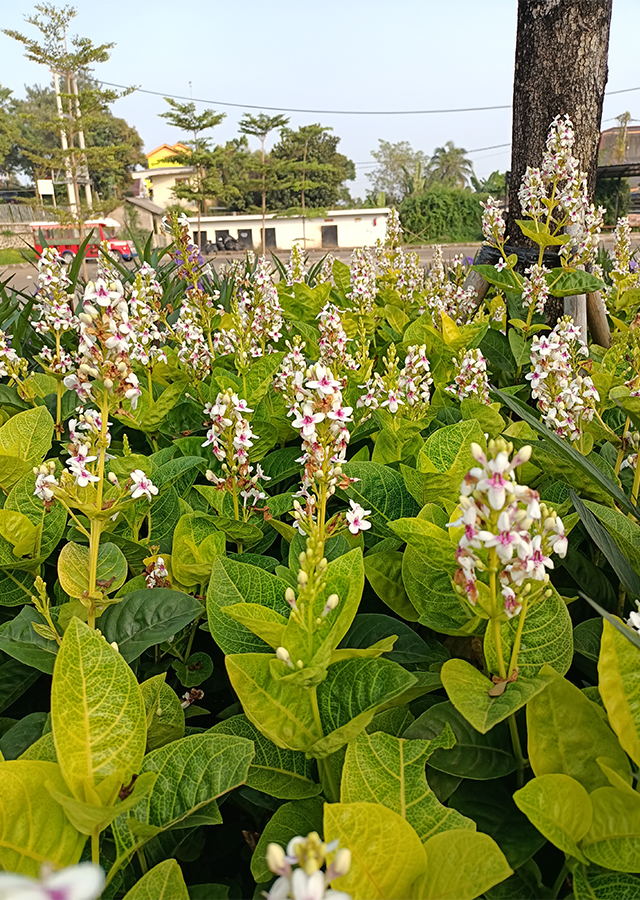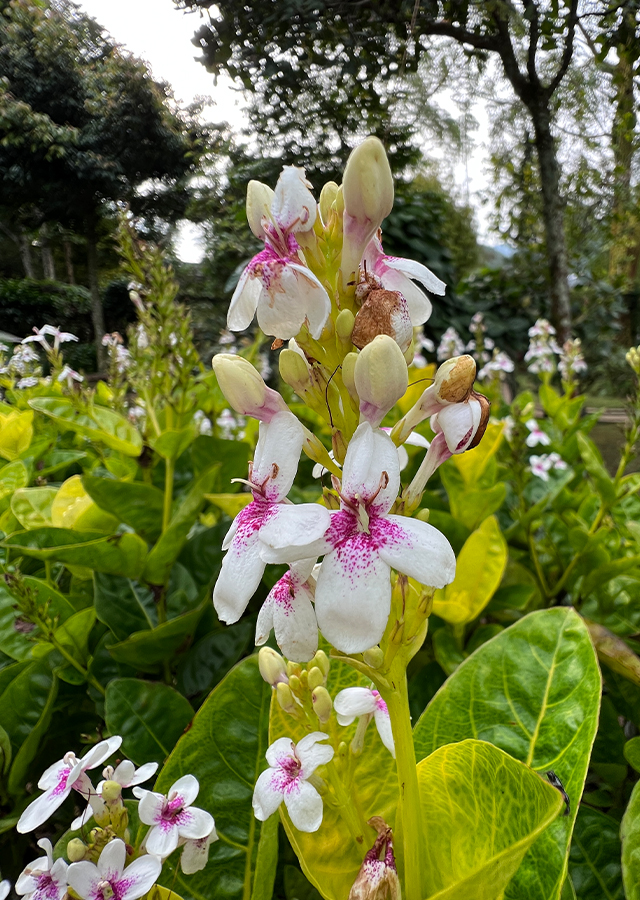Traditional Herbs from Pseuderanthemum maculatum
What is Pseuderanthemum maculatum Looks like??



Parts of Pseuderanthemum maculatum that could be used
- Leaves
- Flowers
Pseuderanthemum maculatum Distribution
Red Japanese jasmine is a flowering plant originating from the forests of Melanesia and Polynesia. This plant is a variant of the jasmine flower and is often found growing in Japan. Therefore, people know it by the name 'Japanese jasmine'. This species has unique colored leaves and flowers and a fragrant aroma, so this species is often planted as an ornamental plant in home gardens and gardens and is also widely planted as a hedge plant. Apart from having a strong aesthetic appeal, it turns out that this species also has economic value, where this plant can be used as a raw material for the cosmetics, perfume, textile and tea flavoring industries. This potential is due to the essential oil content which is known to be of good quality. Traditionally, red Japanese jasmine has also been used as a medicinal ingredient.Agroecology of Pseuderanthemum maculatum
Red Japanese jasmine can grow anywhere, both in the lowlands and in the highlands. This species grows well in environments with an average rainfall of 112 - 19 mm per month and air humidity ranging from 50% - 80%. Its growth likes fertile clay soil, contains lots of organic material, and is well-drained so it is not easily flooded by water. This species does not like flooded conditions. Japanese jasmine grows best in full sun or partial sun for brightly colored foliage. This species also requires regular watering, especially during hot and dry seasons. In Japan, jasmine flowers grow well in dry weather and get plenty of sunlight.
Morphology of Pseuderanthemum maculatum
- Stems are woody, round, small, many branches, yellowish green to brown-cream in color.
- Single leaves (unifoliate), located opposite each other and grow alternately, ovate in shape, with yellowish green leaf color. Leaves This will darken as the plant ages. The vein tissue is yellow.
- Flowers are small, have green petals shaped like a tube which is open at the end, predominantly white with red spots purple in the middle. The petals (corolla) are oval in shape and widen at the end and have 4 petals in one flower. The flowers appear and grow at the end of the stem in groups.
- The fruit is a capsule, small, each fruit has 4 seeds.
Cultivation of Pseuderanthemum maculatum
Propagation is done vegetatively through stem cuttings.
Pseuderanthemum maculatum, more details :
Chemical Content of Pseuderanthemum maculatumEssential oils (livalylacetat, indole, and benzyl).
Benefits of Pseuderanthemum maculatum
Treats fever, headaches, colds, back pain, shortness of breath, and stress.
Simplisia of Pseuderanthemum maculatum
- Prepare Japanese jasmine flowers,\u00a0wash thoroughly with running water\u00a0then drain.
- Dry in direct sunlight for several days or in an oven at a temperature\u00a040\u00b0C until the moisture content\u00a010%.
- Pure until into powder.
- Store\u00a0simplisia in plastic or a clean, airtight container.
Another Facts for Pseuderanthemum maculatum :
Synonym of Pseuderanthemum maculatumEranthemum reticulatum A.de Vos, Pseuderanthemum carruthersii var. reticulatum (W.Bull) Fosberg, Pseuderanthemum reticulatum (W.Bull) Radik.
Habitus of Pseuderanthemum maculatum
Bush. Annual shrub, plant height between 1-2 m
Habitat of Pseuderanthemum maculatum
- Forest
- Land
No comments:
Post a Comment